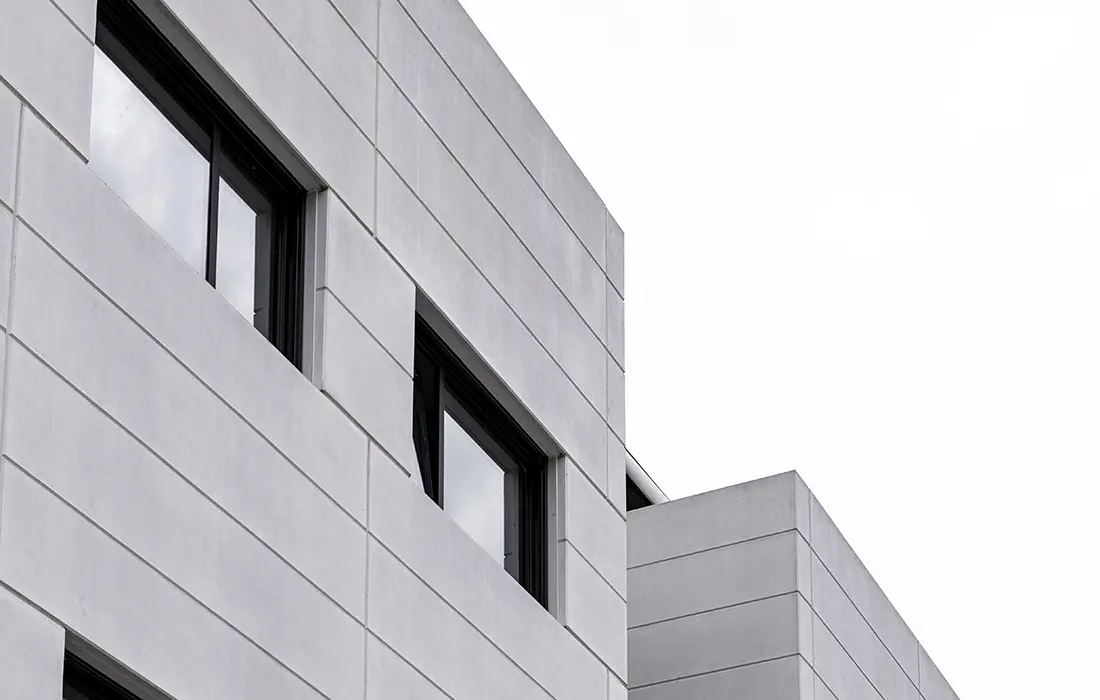Facade cladding is essential for the protection and aesthetics of a building. There are various types of cladding, each with particular characteristics and advantages. The choice of the right cladding will depend on factors such as desired aesthetics, durability and thermal and acoustic insulation. Each type of cladding has its own characteristics and recommendations for use.
Importance of facade cladding for buildings.
Facade cladding is a crucial element in building construction. They not only fulfil an aesthetic function, but also play a key role in the protection of the building. Choosing the right type of cladding not only affects the visual appearance of the building, but also influences its durability and resistance to external elements.
Quality facade cladding can help prevent damage caused by moisture, rain, snow and other weather conditions, thus protecting the building structure over time. In addition, the right cladding can help to improve the thermal and acoustic insulation of the building, creating a more comfortable and energy-efficient interior environment.
Types of natural facade cladding.
Los revestimientos naturales para facades ofrecen una variedad de opciones para la estética y funcionalidad de un edificio. A continuación, se detallan dos de los tipos más comunes:
Natural stone: durability and aesthetics.
- Natural stone is recognised for its durability and resistance to weathering.
- Its use in facades adds elegance and a solid appearance to the construction.
- It is important to consider adding additional thermal insulation to maintain the interior temperature.
- The variety of shades and textures available in natural stone allows it to adapt to different architectural styles.
Wood: Style and warmth
- Wood cladding adds a warm and cosy touch to a building’s facade.
- In addition to its aesthetic appearance, wood is a good acoustic and thermal insulator.
- Special maintenance is necessary to preserve the wood from the effects of weather and humidity.
- Choosing wood as a cladding allows for a natural and sophisticated atmosphere on the facade.
Industrial cladding for facades
Industrial cladding for facades plays a crucial role in the uniformity and resistance of the building structure, ensuring durability and protection against various external factors.
Concrete: Uniformity and strength
Concrete cladding is characterised by providing a homogeneous industrial appearance and a strong structure that adds solidity to the building’s facade. It is important to apply thermal insulators and waterproofing to ensure interior comfort and prevent the appearance of damp on the walls.
- Provides uniformity and continuity on the surface.
- Ensures high structural strength and durability.
- It is recommended to apply thermal insulators to improve the building’s energy efficiency.
Brick: Durability and special treatment
Brick cladding stands out for its durability and resistance over time. However, it is essential to carry out a special treatment to waterproof the facade and reinforce the base due to the weight of the material. This type of cladding provides a classic and robust appearance to the building structure.
- Requires specific treatment to withstand adverse weather conditions.
- It is necessary to waterproof the facade to avoid water infiltration.
- Brick construction adds solidity and structural resistance to the building.
Innovation in facades: Ventilated ceramic facade cladding
Innovation in facade design has led to the development of ventilated ceramic facades, a technically and aesthetically advanced option that offers numerous benefits…
Advantages of ventilated facades
- Improves the building’s energy efficiency by separating waterproofing and thermal insulation functions.
- Reduction of thermal bridges and condensation, improving interior comfort.
- Significant energy savings due to its high thermal insulation capacity.
Designs and resistance of ceramic facades
Ventilated ceramic facades offer a wide variety of designs, textures, and colours, allowing for great aesthetic customisation…
- Resistance to weathering, the passage of time, and adverse environmental factors, ensuring long durability.
- Ceramics is a versatile and resistant material, which also offers easy and long-lasting maintenance.
- Structural resistance ensures effective protection for the facade, maintaining its original appearance for years.
